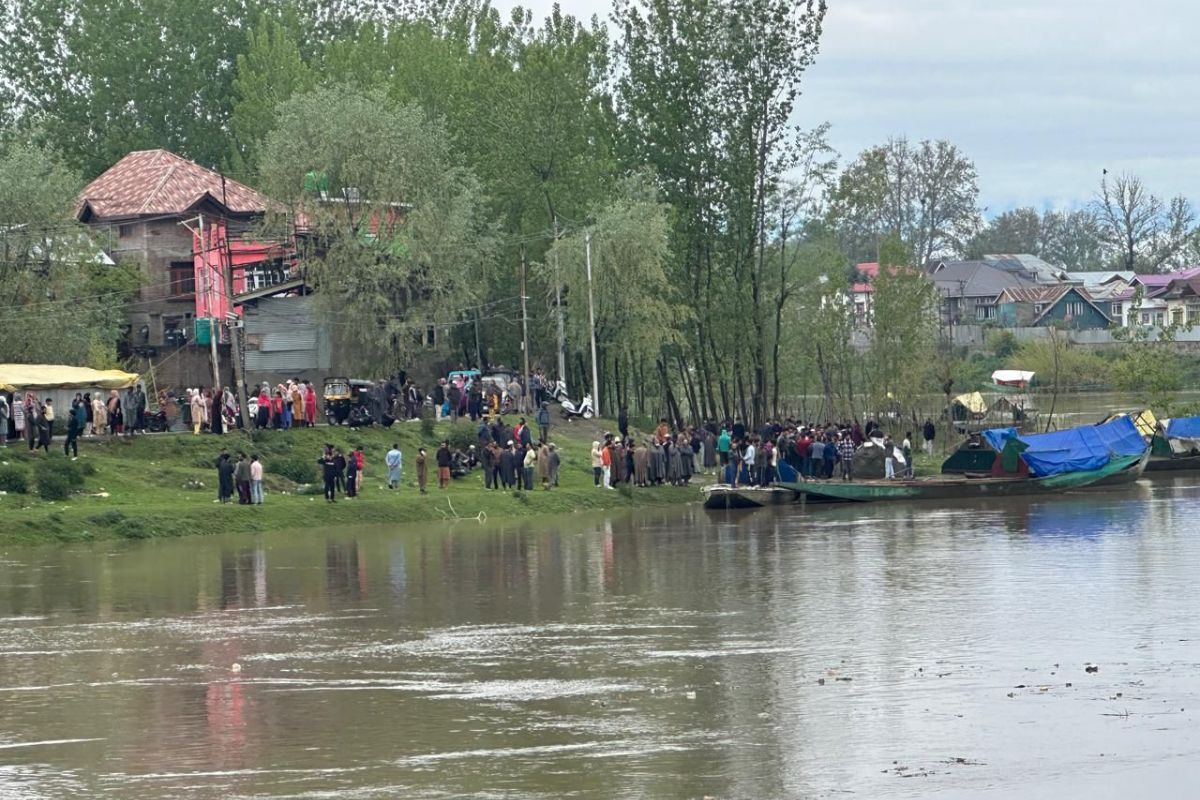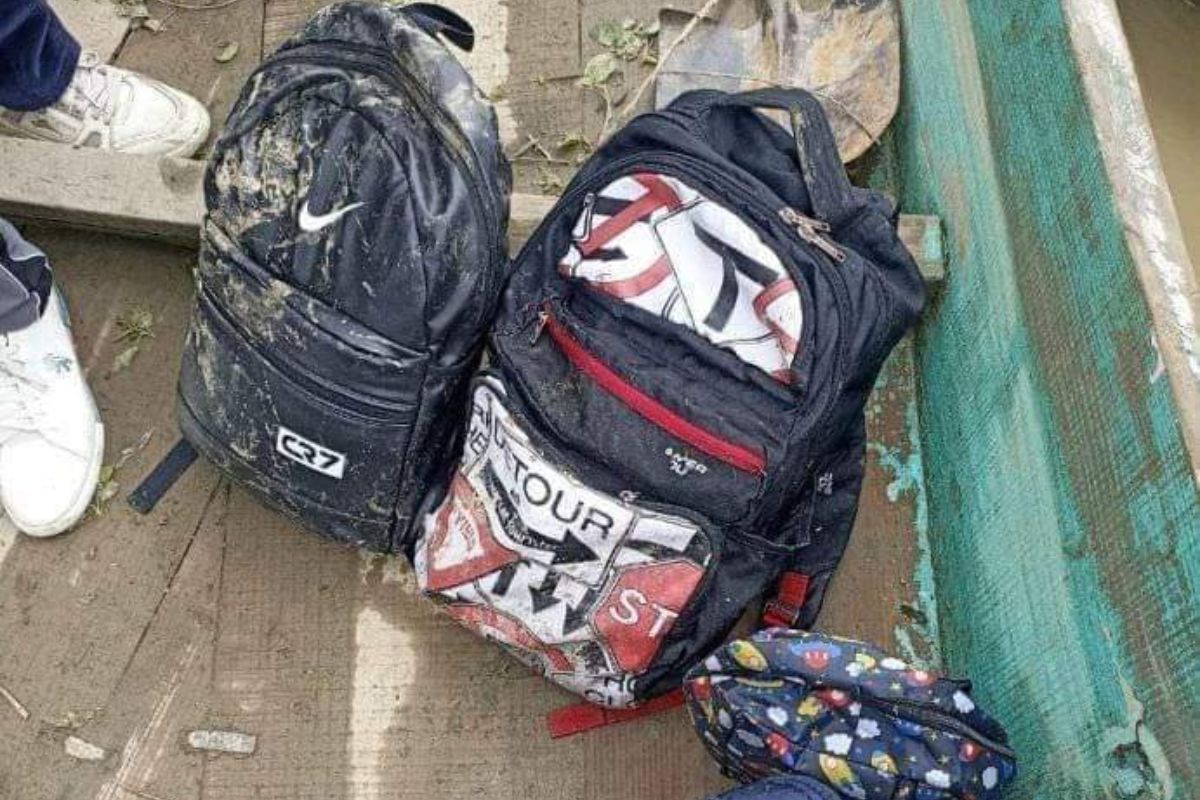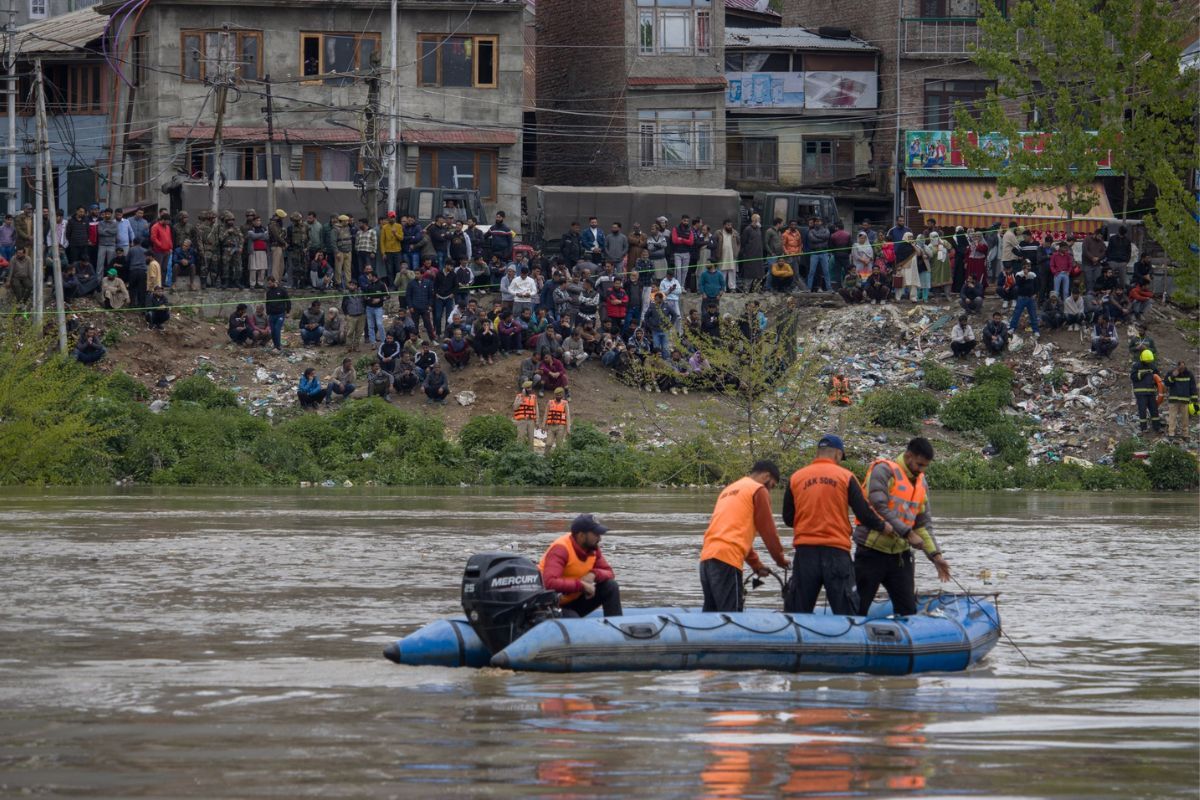Masrat’s Tuesday–April 16th– started like any other. After getting her kids ready for school and packing their lunches, they joined 15 others on the boat. These boats are a lifeline, ferrying passengers from Gandbal to Batwara regularly.
The customary method of crossing the river relied on a rope tied between Gandbal and Batwara of the Srinagar district. Yet, the routine turned into disaster when the rope suddenly snapped, leaving the boat adrift in the river’s unpredictable currents. The boat met its tragic fate as it collided with an incomplete bridge, splitting it into two adjacent pieces.
On the morning of April 16th, around 8 am, the boat tragically capsized in the Jhelum River near Batwara.

Soon, the joint efforts of locals, the State Disaster Response Force (SDRF), the National Disaster Response Force (NDRF), and the local police initiated the rescue operation. Despite their tireless work, six fatalities are confirmed. Apart from the fatalities, five survivors are receiving medical care at a nearby SMHS hospital. However, the whereabouts of the remaining passengers remain unknown, prompting ongoing search efforts.
Tragic boat capsizing; rescue efforts underway
Haunted by the memory of that moment, Masrat’s anguish poured forth as she spoke to the media, “I should never have let go,” she lamented talking about her child.
Deputy Commissioner Srinagar, Dr. Bilal Mohiuddin Bhat, reported to the media that a tragic incident occurred around eight in the morning when a boat capsized in the Jhelum River, connecting Batwara and Gandbal. The boat was carrying approximately 15 people, including eight adults and seven minors.
In response, SRDF, NDRF, Army teams, and local search teams immediately launched a rescue operation. Fortunately, twelve individuals have been rescued so far, identified as but sadly, six have lost their lives. He emphasized that every effort is being made to locate and rescue the remaining missing persons.

Mushtaq Ahmad, one of the survivors, recounted the terrifying moment when the boat capsized. “As we reached the middle of the river, everything suddenly went wrong,” he said. “I grabbed onto a rope for dear life, and thankfully, two other boys and a woman were able to do the same. But sadly, many others couldn’t make it and drowned.”
“There were labourers, school children, and their parents on the boat,” he explained. “It’s heartbreaking because this has never happened before. If there had been a bridge, we wouldn’t have faced such a terrible fate.”
Footbridge project approved in 2016 faced delays
In 2016, During Mehbooba Mufti’s tenure as Jammu and Kashmir’s Chief Minister, a footbridge project was sanctioned to address a longstanding demand of the residents of the area. Initially budgeted at RS 4.7 crore, construction began the following year. However, the project faced setbacks when locals demanded the widening of the bridge to accommodate motor vehicles, leading to delays as the design and budget had to be revised.
“The width of the bridge was initially 5.9 feet according to the original blueprint explained Sajad Ahmad Naqeeb, in an interview with Times of India. “However, residents of the area requested authorities to widen it into a motorable span, prompting a change in the basic sanctioning process that had to restart from Scratch”.

Naqeeb pointed out that the expansion’s delay was primarily due to the unavailability of “dedicated funding”. He noted, “By the time the new design and budget were approved in 2019, Mufti was no longer the Chief Minister.” As a result, the bridge’s width was recalibrated, to 3.9 meters (13 feet). However, construction got delayed due to the abrogation of Article 370 in Jammu and Kashmir followed by a pandemic shutdown. Despite interruptions, two of three planned spans of the bridge have been completed since 2019.
Community seeks bridge for better connectivity
However, In light of the tragedy, there have been calls for action, with many urging Lieutenant Governor Manoj Sinha to launch an inquiry promptly. The aim is to uncover the reasons behind the prolonged delay in completing a footbridge that could have potentially prevented such a disaster.
For the residents of the area, relying on boats and ferries for travel had become routine, emphasizing the critical need for better connectivity in the region. The lack of a bridge over the Jhelum River has long been a source of frustration and disappointment for the community.
Over seven years, attempts to build the bridge have been plagued by interruptions and halts. Despite their persistent appeals to various authorities, including political and social activists, their pleas have fallen on deaf ears.
Protests have erupted across the region, with impassioned citizens demanding accountability and immediate action to address the chronic underdevelopment of infrastructure. As search operations continue and families wait anxiously for news of their loved ones, the anguish and heartbreak are palpable. On the river banks, a silent vigil unfolds as a large crowd gathers, their collective sorrow weighing heavily in the air. Each passing moment is fraught with tension and uncertainty, as hope and despair intermingle in equal measure.
Follow Ground Report for Environmental News From India. Connect with us on Facebook, Twitter, Koo App, Instagram, WhatsApp and YouTube. Write to us at GReport2018@gmail.com and subscribe to our free newsletter.
Don’t forget to check out our climate glossary, and learn difficult environmental terms in simple language.






